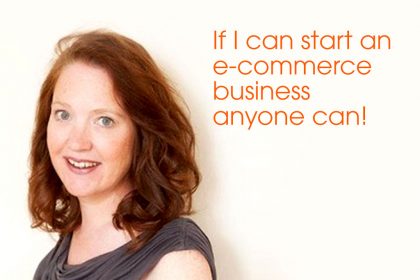Eight clever psychological strategies to boost your online sales
Do you sell products or services online? Love to boost your sales? Here are eight clever psychological strategies (with implementation ideas) to help you.
Are you running an e-commerce website? Want to boost your conversion rate? SEO, web design and online marketing agency Datadial reveals eight powerful psychological sales strategies used by successful online retailers.
1) Social proof
Human nature means we are easily influenced by peer groups. This is why successful online retailers use the ‘social proof’ technique. Here are some ways you can use it to your advantage.
- Well-placed reviews – strategically place reviews and testimonials around your website. This will show the prospects that other people like you. Trustmary.com is a good tool for doing this.
- USP bar highlighting how others have been happy – place this on your homepage and watch your sales rise.
- Endorsements from friends – show your customers what their connections have recently purchased.
- Ego identification – appeal to their sense of identity and place them in a certain social category. Give them something to aspire to. They will read on and buy your product to help them reach that goal.
- Allow a few negative reviews – this can actually increase trust. Especially if you respond to the review. Shows you go out of your way to satisfy customers.
- Social sharing – get your existing customers to share your content with their network. Display these shares in a counter. This adds extra weight to your claims.
2) Pricing tactics
There are certain pricing triggers that either put people off or cause them to click. However, not all target audiences are the same, so it’s also about finding what does and doesn’t work for your different segments.
- Use .97 instead of .99 – this is an improvement on the left digit effect. Most retailers will use £9.99 to make the customer think it’s cheaper. But as customers get more savvy and shop around, you can get ahead by making it £9.97.
- Show the price saving next to the product – put the old price next to the new price, and include the percentage saving.
- Use numerical digits instead of words – it takes less time for the brain to process numbers. The typical internet user has a low attention span. So it’s important to help make their mind up quickly. Half-price becomes 50%.
- Offer incentives to buy more – for example, free shipping on orders over £25. They’ll be tempted to chuck in a few more items.
- Test customer psychology – test customer psychology with different pricing tables. Go with the one that gets results. Tailor your pricing strategy to your market by finding out what they respond to.
- Less syllables make the price appear smaller – the brain associates with the number of syllables with quantity. The more syllables in a price, the more expensive it seems. So three hundred and ninety pounds becomes three-nine-nine.
- Mould people’s perception of value – you can do this by placing the ideal purchase in the middle (if you have three options, people will tend to go for the middle one). Not too cheap, not too expensive.
- Use the price anchoring technique – this is where you have three product options. The cheapest acts as an anchor. The middle is what they’re after. But the most expensive is better value because if they spend an extra few pounds they get twice as much.
3) Scarcity, fear of missing out (FOMO) or loss aversion
We are hardwired to fear scarcity. In nature, scarcity means the difference between life and death. As an online retailer, here’s how you can take advantage of this psychological factor.
- Use cookies – use cookies and put the price up when they next visit the site. You won’t have made a sale, but at least they know next time not to dither. This is a form of psychological engineering.
- Only a few left in stock – this adds urgency and makes them think that if they don’t act now they’ll miss their chance.
- Be careful – by law you can’t lie to people about scarcity. But you can get around this by saying things like ‘only five left at this price’. Then periodically adjust the prices by a small amount.
- Limited time remaining – this can be a good way to urge people into a buying decision. Use a real time countdown to hammer home the point. Good for special offers.
- Develop seasonal product ranges – develop seasonal product ranges and have seasonal limitations. This creates a continued sense of urgency that can increase your overall sales throughout the year.
4) Site layout and colours
The way your website is laid out can have a dramatic effect on a person’s psychology. These tips will help you get it right.
- Don’t be quirky with the layout – people don’t want to waste time learning how to use your website. Use an established template standard to win their trust and loyalty. You can still imbue it with your unique brand identity.
- Upsell – at the check-out page, offer additional, relevant products that they might need. This is a great way to upsell.
- Use colour – if your target market is male, use red call to action buttons. Men are apparently attracted to red because of its strong sexual associations. But for a mixed audience use a neutral colour like orange. If you’re targeting a specific country, research their cultural attitudes to colours. Find out what is positive and vice-versa, and tailor your site to your findings.
- The less-is-more technique – don’t overload your prospects with too many options. This can actually have a paralysing effect on potential customers. Instead, help them narrow their choice. They’ll be grateful.
- Place related items close together – it might tempt them to buy a cheese knife to go with their cheeseboard. It’s about connecting things in the mind of the shopper.
- Place the ‘buy now’ button on the right – we read from left to right, psychologically associating the left with the past, and the right with the future. Put it on the right so they see it as part of their destination.
5) Photography and video
The problem with online shopping is that you can’t touch and smell the product. You can, however, artfully recreate that sense of ‘real-world shopping’.
- Use hi-def photography – use hi-def photography full of texture. This is like art: it creates the illusion that you’re buying something tangible, and not just a bunch of pixels on a screen.
- Take plenty of detail shots – online shoppers like to zoom in and see all the little details to reassure themselves that what they’re buying is worth it.
- Boost sales with videos – boost sales and reduce return rates by featuring videos of the products. People need the onscreen product to match up with the actual receiving of it. The best way to do this is show a video of someone using the product.
6) Closing the sale at the checkout
Okay, you’ve laid out your website perfectly, compelled them to place more items in their basket, now for the final hurdle: closing the sale. Many e-commerce websites fail on this, but you’re not going to.
- Divide the checkout experience into smaller chunks – people are put off by long forms. Dividing them up makes it seem less hassle, and as they move onto each stage they have a sense of ‘getting somewhere’
- Have a quick checkout option for existing customers – this saves them a lot of time, and they’ll return to you simply because it’s easier. They’d rather spend an extra quid than have to go through the bonding process all over again and enter details elsewhere.
- Use a progress bar – use a progress bar during the checkout process. This creates a sense of achievement and makes a purchase more likely.
- Abandoned carts – if you captured their email address, send them a ‘where d’ya go?’ email. This makes them feel wanted and they may wish to return to finish the deal.
- Avoid presenting unexpected costs at the checkout – this is a surefire way to abandonment. Just don’t do it – ever!
- Create a personal feel – create a personal feel to the checkout experience. People like to buy from people. So employ a professional copywriter to craft something with personality.
7) Reciprocation and commitment
Reciprocation is the idea that if you give something to a prospect they’ll give you something in return (in this case, a sale). Similarly, if you give away something for free with ‘no-strings-attached’ they’ll tend to feel committed and will actually stay with you.
These techniques predate e-commerce but are still relevant. So here’s how to make use of them and give your conversation rates a boost.
- Give them a free trial – by giving a free trial, you tap into people’s innate sense of wanting to commit to something.
- Offer a free gift before or with purchase – most people are good by nature. They’ll feel inclined to give something back.
- Content marketing – provide great value content that provides needed information to searchers. From a psychological point of view, this is a form of bonding. They’ll be more likely to reward you with a sale.
8) Expert endorsements
People are conditioned to seek authority for guidance. By getting experts to endorse your product, you craft a positive perception in the minds of the audience.
- Accreditations – if you have accreditations from regulatory bodies and the like, display the badges. This adds weight to the authority.
- Logos – if you work with partners with a strong reputation, display their logos. For instance, if you use a highly-trusted payment portal that everyone loves and respects, display their logo for instant trust.
And a bonus strategy! Improve your website viewability
Once your website is fully live and all set up you will start to get your first customer orders through, which is the exciting part. But you also want to keep an eye on how the website is doing frequently so that you can maintain this momentum. If you try typing in a few key words that relate to your business website in an online search engine like Google you will be able to identify how easily your website appears.
If you find that it is not ranking that high up on the list then you might want to consider using an SEO agency to boost your profile. They will be able to improve your ranking so that customers can easily find you when doing a quick online search which will certainly help to keep the orders flooding in.
Which strategies will you implement?
We hope this has given you food for though – and plenty of ideas to help you improve your online sales. Which ones are you going to start implementing?
You can find out more about Datadial and their services on their website.
Photo by Hannah Wei on Unsplash










